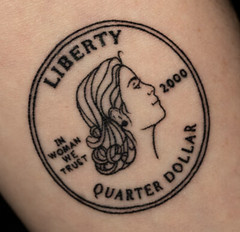
PREV ARTICLE
FULL ISSUE
PREV FULL ISSUE
LOOSE CHANGE: JANUARY 21, 2024Here are some additional items in the media this week that may be of interest. -Editor A Numismatic News article by Patrick Heller discusses how people come to the hobby today. Here's an excerpt - see the complete article online. -Editor Back in the 1960s, it was easy to become a young coin collector. You could start by sorting through your pocket change to fill in the holes in the inexpensive blue folders. There were also a number of newspaper carriers who became collectors then (and later several of them became dealers) because they collected the subscription money from the customers on their routes. Coin clubs galore sprang up across America from the 1950s through the 1960s. The reasons that children today become numismatists are different from those in the 1960s. Fewer than 10% of today's transactions in everyday commerce in America are settled with the use of coins or currency. Further, today's coinage no longer has a metal value close to the face value of the coins. The company where I work has several teenage- and under-thirty employees. Primarily, they became coin collectors because they appreciate history—and coins are a tangible way they can hold history in their hands. A couple just like looking at all the different coin designs, shapes, and metal contents. Even though these younger collectors may not constantly carry loose change in their pockets, they have still found their way to numismatics. 
The generational shift in the hobby has been clearly evident for some time. I was one of those newspaper boys collecting subscription payments door to door beginning around 1969. I received silver and foreign coins regularly, and having already started Whitman albums, I eagerly looked for dates and mintmarks I needed. Those days are long gone, but the coins still exist even if they aren't seen in circulation. It's very heartening to see the influx of today's young collectors and dealers. I'd like to hear from some of our younger readers - how did YOU get started in numismatics? -Editor
To read the complete article, see:
Roger Burdette published a CoinWeek article detailing the melting of gold coins into bars after President Roosevelt's 1933 Executive Order. The horror! Painful history for numismatists and collectors. Here's an excerpt - see the complete article online. -Editor
The primary consideration was security. Not merely the usual protection of gold from loss or theft but also the influence of international politics on America's national security. To safeguard America's gold, Treasury Secretary Henry Morgenthau's staff developed a three-step plan. The first step was to move gold in all forms away from the lightly defended West Coast. The second step was to reduce the volume of vault space required to store gold. This was accomplished by having the Philadelphia and Denver mints melt coins into bars without extensive assays or reweighing. And finally, the third step was to build a central storage facility for gold on land at Fort Knox, Kentucky, and a similar facility for silver bullion at West Point Military Academy.
To read the complete article, see:
We've pictured various numismatic-themed tattoos in the past. A new one was pictured this week in a Washington Post article about women and money. -Editor Two dozen women gathered in a California living room one night in 2018, ready to talk money.
The name Baker gave the circle? Dow Janes. In the years since, Dow Janes has grown from a small group of friends helping friends into a business that offers paid online courses. Baker and King teach women across the United States and Canada how to take control of their money, with a bold mission at the heart of their work. Have any of our readers gotten or seen a new money-themed tattoo? Show us your tats! -Editor
To read the complete article, see:
Wayne Homren, Editor The Numismatic Bibliomania Society is a non-profit organization promoting numismatic literature. See our web site at coinbooks.org. To submit items for publication in The E-Sylum, write to the Editor at this address: whomren@gmail.com To subscribe go to: https://my.binhost.com/lists/listinfo/esylum All Rights Reserved. NBS Home Page Contact the NBS webmaster 
|

